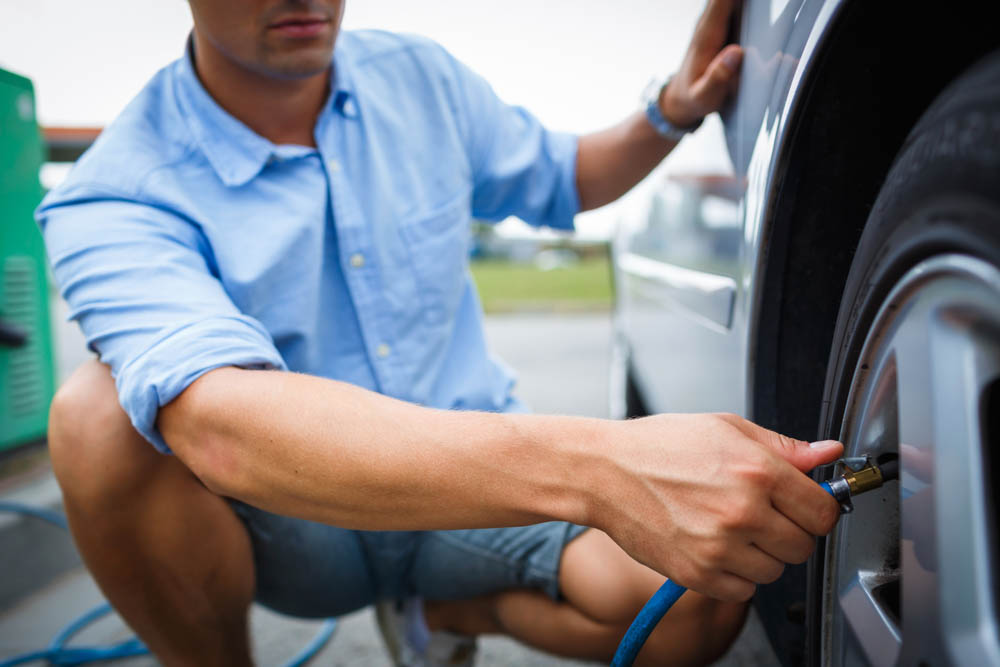CEO Corner: The Push and Pull of 2022
So far, the new year is proving to be eventful and unpredictable. We’ve witnessed a…
Continue Reading
May 9, 2022
Drivers can ease their pain at the pumps by checking tire inflation monthly and modifying their driving habits. Proper tire inflation and maintenance improve fuel economy, enhance safety, performance and longevity while protecting the environment
Cambridge, May 9, 2022 – Two-thirds of Canadian drivers will be staying closer to home this summer, according to a new Leger survey for the Tire and Rubber Association of Canada (TRAC; https://tracanada.ca/).
The survey finds that 66 per cent of drivers say fuel prices will force them to cancel or limit road trips this summer. Among young drivers aged 18 to 24 that number climbs to 75 per cent. Eight-in-ten Canadian drivers also believe high gas fuel prices are here to stay.
However, the survey findings also reveal a significant disconnect between drivers’ understanding that proper tire inflation improves fuel economy and their knowledge about when and how to measure and set the correct tire pressure.
“With these substantial knowledge gaps about tire maintenance, it’s apparent that drivers need more education to improve their fuel economy effectively. With gas prices at all-time highs and no relief in sight thus far, the time has come for all drivers to arm themselves with the knowledge needed to lower fuel costs,” says Carol Hochu, president of TRAC. “Monthly checks to ensure your tires are correctly inflated are the most effective way to achieve the best fuel economy and extract the most value from your tires. Combined with the right driving habits such as reducing idling, maintaining a steady speed, accelerating gently and coasting to decelerate, these small, simple practices can add up to big improvements in fuel economy. Drivers have the power to fight back against high gas prices by learning these few simple techniques to ensure they are always riding on properly inflated tires.”
Industry studies show motorists can improve their gas mileage by 0.6 per cent on average – up to 3 per cent in some cases – simply by keeping their tires inflated to the vehicle manufacturer’s recommended pressure. Additionally, underinflated tires can lower gas mileage by about 0.2 per cent for each one PSI drop in the average pressure of all tires. Driving a vehicle with just one tire underinflated by 56 kPa (8 psi) can increase vehicle fuel consumption by four per cent.
According to Statistics Canada, in 2019 Canadians purchased 43 billion litres of gasoline. With a 0.6 per cent gas mileage improvement resulting from proper tire inflation, drivers would have avoided having to buy 258 million litres of gasoline and saved about $490 million. Saving this much gasoline would also avoid the release of 593,000 metric tonnes of CO2 into the atmosphere, which equals the emissions of 125,000 vehicles in a year. (Based on $1.90 per litre fuel cost between January and April 2022, and one litre of gasoline producing 2.3 kilograms of CO2)
TRAC encourages drivers to learn more about maximizing the fuel efficiency and performance of their tires by visiting https://tracanada.ca/consumers/.
Step One
Find the recommended inflation pressure for your tires on the vehicle placard, which is commonly located on the driver’s door jamb. If you can’t find it, check the owner’s manual for its location.
Step Two
Remember to only measure pressure when the tires are cold. If you have been driving more than two kilometers, wait three hours before measuring.
Step Three
Use a tire gauge when measuring pressure. Remove the cap from the valve stem, press the tire gauge onto the valve and take the pressure reading.
Step Four
Add air until the recommended air pressure is achieved. If you overfill the tire, release air by pushing on the metal stem in the centre of the valve, then re-check the pressure.
A survey of 1,538 Canadian drivers was completed between April 8-10, 2022, using Leger’s online panel. A probability sample of the same size would yield a margin of error of +/-2.5%, 19 times out of 20.
The Tire and Rubber Association of Canada (TRAC) is the national trade association representing tire makers, rubber products manufacturers and importers as well as rubber recyclers and suppliers of goods and services related to the industry. TRAC is committed to educating drivers about proper tire care and maintenance. A key advocacy goal in the cold-weather months is to raise awareness about safe winter driving and the safety and performance benefits of winter tires.
Tire and Rubber Association of Canada
5409 Eglinton Ave W, Suite 208
Etobicoke, ON M9C 5K6
Tel: (437) 880-8420
Email: [email protected]
